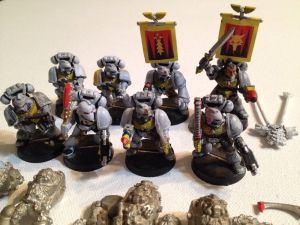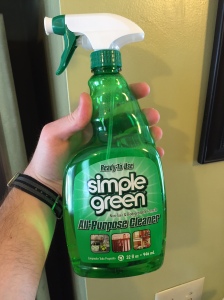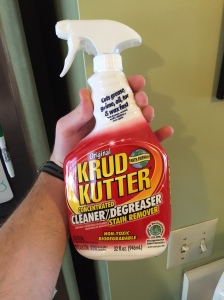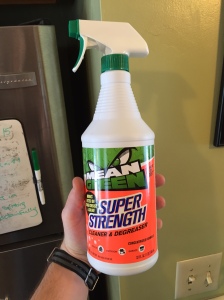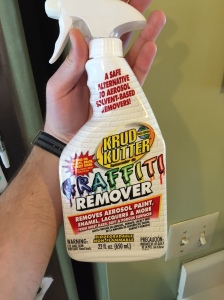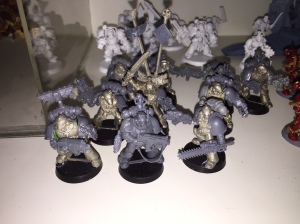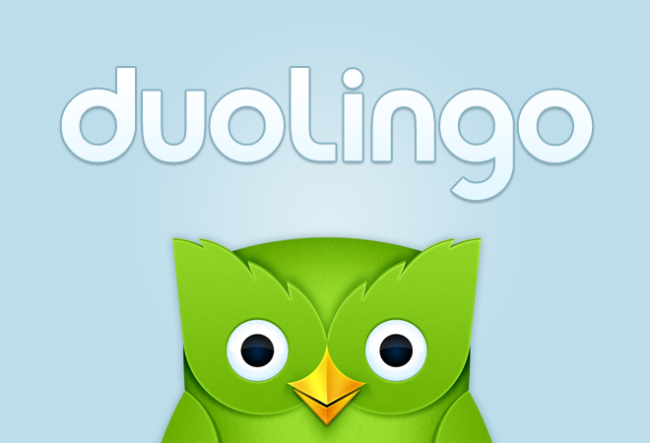
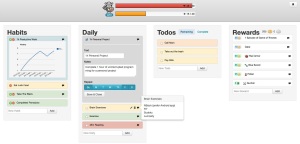
The basic interface is clean, and serves as a nice compromise between traditional to-do lists and an RPG-style status screen.
In keeping with my general interest in gamification, I was floored when I found out about a web app called HabitRPG that promises to gamify your daily habits and reward you with various gimmicks (avatar upgrades, pets, etc). I’ve given it a try for a little over a week now and I think I’ve got enough insight to discuss some of my impressions.
In general, I think they’re onto something in a big way, and I believe that stroking the human reward circuitry with small but frequent rewards is the key to becoming the best people we can be. Several times in my wade through the site, I found myself wishing I had come up with the idea first. (On a side note, their project is open source, so the good news is that someone else could pick up the ball in the event that they gave up on it somewhere down the line).
For those of you who want an idea what the site’s all about, it’s based around the idea of listing out the habits you want to track – one-time to-dos, daily routines, and intermittent habits that you’d like to do more or less often, and then providing you with a system to reward and punish yourself. As the name implies, it’s inspired by role-playing game mechanics including health, (which depletes if you do a bad habit or miss a daily task) experience (which accumulates as you do good things and yields level increases that unlock site features), and gold (which you can use to unlock rewards like avatar equipment). It’s fairly intuitive once you understand the central mechanics, and the rewards make for a more interesting experience than you’d find in plainer to-do organizer.
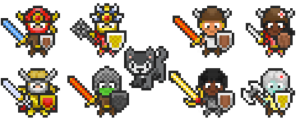
If my program gave out pixel dudes, I’d have three PhDs by now.
In the time since I’ve started using it, I’ve already noticed more motivation to stay on top of my daily habits (I recently had an evening meeting that tempted me to skip a workout, a meditation session, and some guitar practice, but I forced myself to stick to all three when I got back lest I lose my streak.) What’s more, it’s given me motivation to take on tasks that I had largely ignored before. For example, I’m not the best at keeping on top of chores, but I find myself making a priority to hit a few simple ones as often as possible thanks to the looming promise of seeing a little pixelated version of myself in chain mail. Therefore, I can see how this could definitely help me use my time wisely and keep moving forward.
Here’s the breakdown of the pros and cons as I see them.
The Good:
– The interface is appealing, and the 8-bit style pixel art gives it a fun look and feel
– The existence of three types of tasks (Habits, Dailies, and To-dos) makes the game extremely versatile. Furthermore, the ability to switch off dailies on certain days makes good sense for recurring habits that shouldn’t happen 7 days a week. (Most sensible fitness enthusiasts give themselves some rest days, for instance)
– While it’s still under development, there has been some care taken to allow you to restore your character if the game crashes and robs you of a streak or an achievement. This is vital, since I’ve already needed to do that once and I can imagine the epic ragequit that would ensue if I’d already invested a lot of time and energy.
– The dual accountability systems of parties and guilds allows for some great opportunities to get support from friends and like-minded people. Granted it’s not much help if none of your friends are productivity geeks, but it’s nice to know that others will get to see your avatar dude clad in the coolest gear.
– Although I have not yet delved into it deeply, the creators are pursing integration with other programs pretty aggressively. This is wonderful for people who use a lot of gamified apps, organizers, and productivity tools. Ideally, it would be nice to go about my day as normal and have HabitRPG credit me for my web behavior (via the chrome extension), my to-dos (via Trello or similar), etc. This functionality seems to be in the works, but all the bugs aren’t yet worked out.
– The price is right. Without paying a dime, you get essentially full functionality with a couple of ads that don’t distract too much. I worry a bit that this could lead to some unsavory monetization tactics down the road, but I’ll give them the benefit of the doubt that they could monetize it without breaking the app for free members.
– The development pace appears brisk. The mobile app coming out soon has the potential to make it much easier to keep up on, and it seems like the authors have their ducks in a row, organizing their emerging features and bug fixes via a group Trello account that anyone can see.
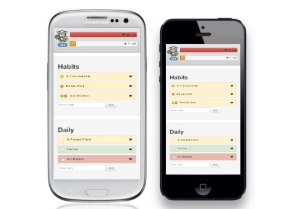
The upcoming mobile app release will make it a lot easier to maintain your account.
The Bad:
– It’s slow and buggy in its current incarnation. If you’re expecting a fully polished product, it’s not quite there yet. (It is under active development, however, so I expect this complaint to be time-limited)
– The user-generated tasks and difficulties create somewhat of an apples to oranges environment. Obviously cheating will always be possible with apps like these, but here it’s totally possible for two honest players to have completely different levels and scores for doing the same things, all depending on how they’ve set up their lists and what they give themselves credit for. I think that it would be beneficial for there to be a library of democratically decided tasks to choose from, so you stand a better chance of being on the same page with your friends.
– The gem system worries me a little bit. It smacks of the special currencies in so many of the gimmicky facebook games, where there’s no access to certain perks without spending real money.
In closing, I think this is worth checking out, and is a viable alternative to other habit tracking sites like alive.do, lift, and so forth. It’s not yet my sole to-do manager, but I could definitely see it being a major hub to keep myself organized in the future. There’s a lot of potential in this concept, so I hope to see it turn into something even more addictive in a couple of years.
(In lieu of collecting links in the post, I’ve begun curating productivity sites in the sidebar, and I plan on continuing to add to it as I find more. I’m always open to suggestions if there’s something out there that you’d like me to check out or review.)
Minor update 12/10/13:
I’ve been using HabitRPG for months now, and the angularJS rewrite did in fact make it run considerably faster and crash a bit less. I will say that the game doesn’t seem to be designed very well for people who actually keep on top of their habits, as it’s quite easy to obtain the maximum armor in just a few months’ time, and there’s not really anything else to spend gold on. With this much usage, a few of their minor issues have begun to grate on me:
- Development is ongoing, and features are being added with some regularity. However, the developers have a clear priority for making exclusive content for backers and contributors, and much of the other optional content is only available for purchase using gems. I understand that the developers need to make money to keep the site going, but I’d rather have them break down and charge money or use more obtrusive advertising instead of dividing the game into “haves” and “have nots” and spoiling their inner circle with perks. It doesn’t make sense to me that I should have to learn how to program and contribute to their project if I want to get all the achievements and upgrades.
- Related to the above issue, my earlier fears about this gem system have been confirmed. Much like the free-to-play facebook games that award one currency freely but keep an unrelated currency in extremely short supply, I find myself drowning in gold while I have no way of getting gems without buying them outright with real money. This has seriously diminished my motivation to continue using the platform, and in fact I’m debating forking the code to see if I can work from a local install where I can buy gems and drops with gold so that I have some way to progress.
- The fact that the game is constantly under development sort of ruins the current gold mechanic. There is talk of adding character classes at some point, so I’d rather hoard my gold and buy equipment for the other character types when it arrives rather than creating my own (out-of-game) rewards and losing the gold when I need it to improve the game.
- The item drop system is arbitrarily capped at 2 per day (at least it was when I looked into it). Because I have several dailies with long streaks, this cap was usually maxed out fairly early in the day, meaning I didn’t get any particularly interesting rewards for everything else I was hoping to do that day. I’m not really sure why there needs to be a cap at all, but I found it ruined my motivation when I was checking boxes for nothing but a little bit of (currently useless) gold.
- The item drop system really should consider what’s in your reserves before dropping an item, especially in light of the extremely limited cap. I’m sitting on over a dozen animal eggs at the moment and have never had a surplus of either food or hatching potions. I understand that this would take a little bit of extra programming, but the developers have to consider that most regular users are going to hit an “endgame” state pretty fast given the relative ease of maxing out the weapons and armor, and it’s lame to keep getting wolf eggs when I already have enough to hatch every wolf cub in the game.
- Yet another complaint about the item drop system: It’s possible to sell eggs back to the stable, but only for gold. This is better than nothing, but it again does nothing for players who have bought all that there is to buy.
- The challenges system has been implemented, and promises an in-game way to obtain gems, but so far I haven’t found any use for it. Usually, by the time I find a challenge that’s relevant to me, it’s already been going for a few days and it’s impossible for me to win. I don’t really have time to check every day to see if there are official challenges being launched for the stuff I’m already doing, but if I wanted to win gems in game I would have to do that and move from the daily version I’m already using to the one supplied in the challenge. In short, it’s a nice idea but it’s not really geared toward people who are already on top of things.
In conclusion, HabitRPG is still a great premise, but its gamification features start to fall apart after a few months of successful “gameplay.” Mostly, I feel like it’s badly in need of additional content to keep the core gameplay going. If they had hundreds of armor pieces to purchase, even if they were purely cosmetic, it would at least give players something to work for. I feel like there’s a wall in place, and the only people who are getting the full experience are those who have been friends of the project from the beginning. If you already contribute to the project regularly, backed the kickstarter, and feel comfortable paying money for gems, then you get to be a special class of player with diamond armor, unique pets, and achievements specific to contributors. For the rest of us, we’re relegated to a sort of proletarian status where we’ll have to be content with an arbitrary blockade in our progress because we serve our own goals rather than those of the habitRPG team. If I were in charge, I would do away with most of the special privileges and allow anyone to buy “habitRPG premium” for some annual fee, which would enable all of the in-game content to be buyable with gold.
